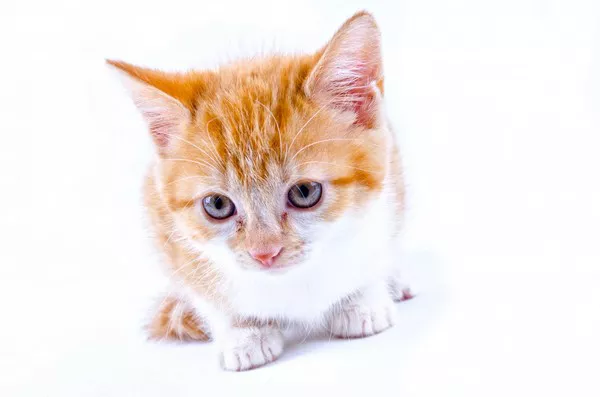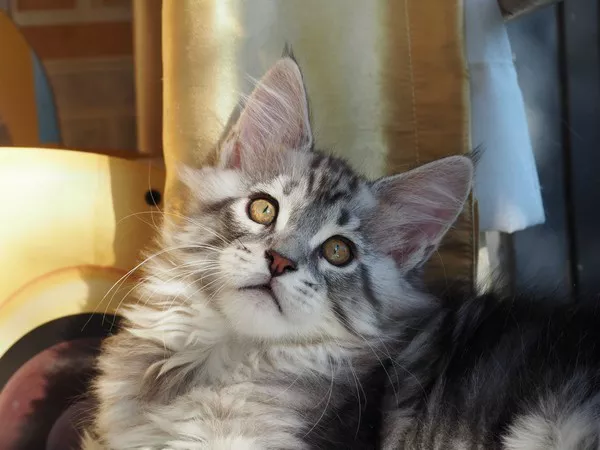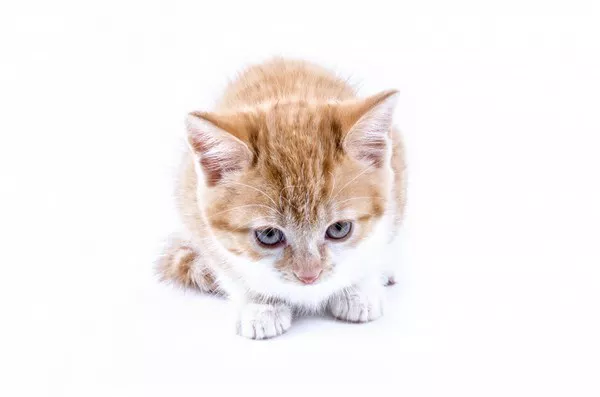As cat owners, we naturally want our feline companions to have a healthy, shiny coat that reflects their overall well-being. A cat’s fur can be a good indicator of its health, and maintaining it in top condition requires attention to diet, grooming, and overall wellness. In this article, we will explore effective strategies to improve your cat’s fur health, including the importance of a nutritious diet, proper grooming practices, regular vet check-ups, and how to identify and address common coat issues.
Diet and Nutrition
A well-balanced diet plays a crucial role in maintaining your cat’s coat health. Without proper nutrition, a cat’s fur may become dull, brittle, or prone to excessive shedding. Let’s explore some key aspects of diet and nutrition that are vital for your cat’s fur health.
High-Quality Food
The foundation of healthy fur starts with a high-quality cat food that provides the necessary nutrients for a shiny, vibrant coat. It’s essential to choose a commercial cat food that offers a balanced nutritional profile, emphasizing high protein content. Cats are obligate carnivores, meaning they require a diet rich in animal-based protein to maintain their health.
Why Protein Matters: Protein is a building block for strong, healthy hair follicles and fur. Foods containing high-quality animal proteins, such as chicken, turkey, or fish, will ensure that your cat’s body has the necessary amino acids for healthy fur production.
Avoid Fillers: When selecting a cat food, look for options that do not rely on fillers like corn, soy, or wheat. These ingredients are often used to bulk up the food but do not provide the essential nutrients your cat needs for fur health.
Essential Fatty Acids: Omega-3 and Omega-6
Essential fatty acids, particularly omega-3 and omega-6 fatty acids, are crucial for maintaining a shiny, healthy coat. These fatty acids play a role in regulating the skin’s oil production, which helps to keep the fur moisturized and prevents dryness or flakiness.
Omega-3 Fatty Acids: Omega-3 fatty acids, commonly found in fish oils (such as salmon oil), flaxseed, and chia seeds, promote a glossy coat and help reduce inflammation that can lead to skin irritation. Omega-3s also help to soothe dry, itchy skin, preventing excessive scratching and shedding.
Omega-6 Fatty Acids: Omega-6 fatty acids are important for healthy skin cell production and maintaining a balanced skin barrier. Foods like poultry fat, sunflower oil, and safflower oil are rich in omega-6s. When choosing cat food, look for formulas that include both omega-3 and omega-6 fatty acids to support your cat’s coat health.
Supplements: If your cat’s food does not contain adequate amounts of omega-3 or omega-6 fatty acids, consider adding a supplement, such as fish oil or flaxseed oil, to your cat’s diet. Always consult with your veterinarian before introducing any supplements to ensure proper dosage.
Hydration
Hydration is just as important for your cat’s fur health as nutrition. Adequate water intake helps maintain skin elasticity and reduces the likelihood of dry, flaky skin that can affect the coat.
Fresh Water: Make sure your cat always has access to fresh, clean water. Cats are often reluctant to drink water, so providing a cat water fountain may encourage more frequent drinking. Cats prefer running water, which may make them more likely to stay hydrated.
Wet Food: In addition to dry food, consider incorporating wet food into your cat’s diet. Wet food has a high moisture content, which can help keep your cat hydrated. This is particularly beneficial for cats that do not drink enough water on their own.
Grooming Practices
Regular grooming not only keeps your cat’s coat looking shiny but also plays a role in reducing shedding and preventing matting. Grooming practices should be tailored to your cat’s coat type—whether short, medium, or long.
Regular Brushing
One of the best ways to improve your cat’s fur health is by brushing it regularly. Brushing helps remove loose fur, dirt, and debris, while also distributing natural oils throughout the coat.
Short-Coat Cats: For cats with short coats, brushing once or twice a week is usually sufficient. A fine-toothed comb or a rubber grooming brush will help remove loose hairs and prevent them from accumulating around the house.
Medium- and Long-Coat Cats: Cats with medium or long coats need more frequent grooming, usually 3-4 times a week or even daily. Use a wide-toothed comb or slicker brush to remove tangles and mats. Regular brushing can prevent matting and help reduce hairballs.
Benefits: Regular brushing helps minimize shedding by removing loose fur before it falls out on its own. It also improves blood circulation, which supports hair growth and healthy skin.
Bathing
While cats are generally good at grooming themselves, there may be times when a bath is necessary. However, bathing should not be done too frequently, as it can strip the natural oils from your cat’s skin and coat.
When to Bathe: You may need to bathe your cat if they have gotten into something dirty, sticky, or if they have a skin condition that requires medicated shampoos. Otherwise, bathing every 2-3 months is generally enough.
How to Bathe: Always use a cat-specific shampoo and conditioner that are gentle on the skin. Avoid using human shampoos, as they can be too harsh for a cat’s sensitive skin. Make sure the water is lukewarm, and be gentle during the bath to minimize stress.
Flea and Parasite Control
Fleas, ticks, and other parasites can severely affect your cat’s fur health by causing itching, irritation, and hair loss. Regular flea and parasite prevention is essential for maintaining a healthy coat.
Flea Prevention: Use a veterinarian-recommended flea prevention treatment, such as topical treatments, flea collars, or oral medications. Ensure that your cat is regularly treated to avoid flea infestations.
Other Parasites: In addition to fleas, ensure your cat is protected from other external parasites like ticks and mites. Consult your veterinarian for appropriate preventative care.
Health and Wellness
Your cat’s overall health directly impacts the quality of its coat. Regular veterinary care and stress management are crucial for maintaining fur health.
Regular Vet Check-Ups
Routine veterinary check-ups are vital for identifying any underlying health problems that may affect your cat’s fur. Issues such as allergies, infections, or hormonal imbalances can have a direct impact on coat health.
Allergies: Cats can develop allergies to food, environmental factors, or flea bites, which can lead to skin inflammation and hair loss. If your cat is scratching excessively or has bald patches, a vet visit is necessary to diagnose the issue.
Hormonal Imbalances: Conditions like hypothyroidism or hyperthyroidism can lead to changes in a cat’s coat, including thinning fur or excessive shedding. Regular check-ups will help catch such issues early.
Stress Management
Stress can have a significant impact on your cat’s coat health. Cats that are stressed may groom excessively, leading to hair loss or a dull coat. Managing your cat’s stress is essential to maintaining its fur health.
Stable Environment: Ensure that your cat’s living environment is stable and free from sudden changes or disruptions. Cats thrive in predictable environments where they feel safe and secure.
Interactive Play: Provide opportunities for your cat to engage in interactive play to release pent-up energy and reduce stress. Toys, scratching posts, and puzzle feeders can help keep your cat mentally and physically stimulated.
Safe Spaces: Cats need places to retreat when they feel stressed. Ensure there are quiet, cozy spots where your cat can rest and relax away from loud noises or household chaos.
Identifying and Addressing Common Issues
Several issues can affect your cat’s coat, and it’s important to address them promptly. Here are a few common coat-related concerns and their solutions:
Dull Coat
A dull or lackluster coat may be a sign of poor nutrition or an underlying health problem. Ensure your cat is eating a balanced, high-quality diet, and consult your vet if the dullness persists, as it may indicate a medical issue.
Hair Loss
Excessive hair loss, or alopecia, can be caused by a variety of factors, including allergies, parasites, or stress. If you notice significant hair loss, it’s important to consult a veterinarian for a proper diagnosis and treatment plan.
Skin Conditions
Common skin conditions such as dermatitis or fungal infections can negatively affect the health of your cat’s coat. If your cat is scratching excessively or has scabs or sores on its skin, veterinary care is necessary to identify the cause and determine an appropriate treatment.
Conclusion
Improving your cat’s fur health requires a combination of good nutrition, proper grooming, stress management, and regular vet check-ups. By focusing on these key areas, you can help ensure your cat maintains a soft, shiny coat and overall good health. Regular care and attention to these factors will not only enhance your cat’s fur but will also contribute to its overall happiness and well-being.
Related Topics



























